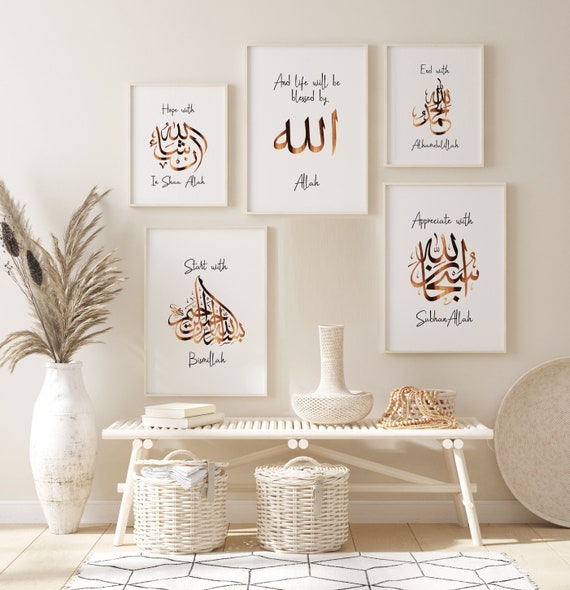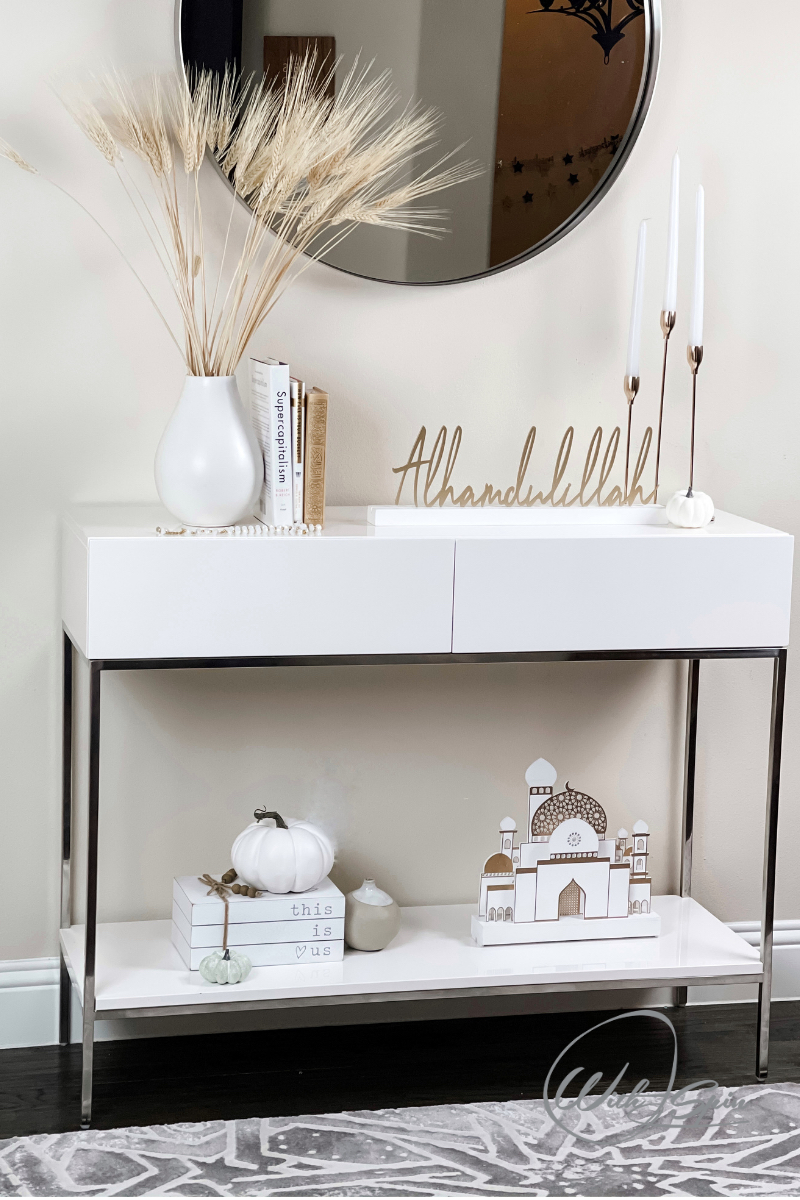Decorating your home is not just about aesthetics; it’s about creating an environment that resonates with your values and beliefs. For many, incorporating Islamic decorations into their homes is a way to express their faith and cultural heritage. In this guide, we’ll explore various styles, ideas, and tips for integrating Islamic decor into your living space, making it not only beautiful but also spiritually uplifting. Drawing from personal experiences, I’ll help you navigate through this journey.
Understanding Islamic Decor: The Essence of Beauty and Faith
Islamic art and decor have a rich history characterized by intricate designs, vibrant colors, and profound symbolism. The essence of Islamic decoration is deeply rooted in spirituality, emphasizing a connection to the divine. Here are some key features of Islamic decor:
- Geometric Patterns: These are prevalent in Islamic art, representing the infinite nature of Allah.
- Calligraphy: Arabic calligraphy often adorns walls, emphasizing verses from the Quran.
- Natural Elements: Incorporating plants and natural materials reflects the beauty of Allah’s creation.
- Color Palettes: Rich, warm colors like deep blues, greens, and golds are commonly used.
Types of Islamic Decor for Your Home
Now that we understand the essence of Islamic decor, let’s delve into specific types you can incorporate into your home.
1. Wall Art and Calligraphy
One of the most impactful ways to introduce Islamic decor is through wall art and calligraphy. Your walls can become a canvas for expressions of faith.
Pros
- Creates a focal point in a room.
- Encourages spiritual reflection.
- Available in various designs and sizes.

Cons
- May require precise placement for impact.
- Can be costly for custom pieces.
2. Textiles and Fabrics
Incorporating textiles is an excellent way to add warmth and comfort to your home. Islamic textiles can be used in various forms:
| Type of Textile | Usage | Features |
|---|---|---|
| Rugs | Floor covering | Intricate patterns and rich colors |
| Cushions | Seating and decor | Embroidered designs |
| Drapes | Window coverings | Light-filtering yet decorative |

Pros
- Adds softness and comfort.
- Easily interchangeable for seasonal decor.
Cons
- Requires regular cleaning.
- Can fade over time if exposed to sunlight.

3. Islamic Furniture
Furniture can reflect the essence and aesthetics of Islamic design, using natural woods and intricate carvings.
Pros
- Durable and practical.
- Can become a statement piece in any room.

Cons
- Can be expensive depending on craftsmanship.
- May not fit all interior styles.
4. Lighting
The right lighting can dramatically influence the mood of your space. Islamic lamps and chandeliers often feature stunning designs that can elevate any room.

Pros
- Creates a warm ambiance.
- Variety of styles available.
Cons
- May require specific bulbs for effect.
- Installation can be complicated for complex fixtures.

How to Incorporate Islamic Decor into Different Spaces
Now that we have examined various types of Islamic decor, let’s explore how to incorporate them in different areas of your home to create a harmonious environment.
Living Room
- Display large wall art featuring Quranic verses.
- Use patterned rugs and cushions to add texture.
- Incorporate a decorative coffee table with Islamic motifs.

Dining Room
- Add a beautiful chandelier with intricate designs.
- Set the table with embroidered tablecloths and placemats.
- Use traditional pottery for serving dishes.
Bedroom
- Choose bedding with Islamic geometric patterns.
- Incorporate soft lighting with lantern-style lamps.
- Add a nook with Islamic literature for quiet reflection.
Outdoor Spaces
- Utilize garden decor featuring Arabic calligraphy or geometric designs.
- Incorporate shaded seating areas with embroidered fabrics.
Personal Experience: My Journey with Islamic Home Decor
When I first decided to decorate my home with Islamic decor, I was overwhelmed by the choices available. I wanted to strike a balance between honoring my faith and creating a cozy space. After much research and some trial and error, I found that focusing on a few key pieces made the biggest difference.
One of my favorite additions was a large canvas print of an Arabic calligraphy verse. It immediately set the tone in my living room, inviting both admiration and contemplation. I paired this with a geometric patterned rug that tied the entire space together.
Additionally, I discovered that small touches, like using a beautiful decorative plate as wall art or adding a few potted plants, can make the space feel alive. The best part? Each piece tells a story and reminds me of my faith daily.
Tips for Choosing the Right Islamic Decor
Selecting Islamic decor involves thoughtful consideration. Here are some tips to help you choose the right pieces:
- Reflect on Your Style: Determine whether you prefer traditional or contemporary designs.
- Quality Over Quantity: Invest in a few high-quality pieces rather than filling your home with decor that lacks meaning.
- Understand Space: Consider the size and layout of your rooms before purchasing large items.
- Consistency is Key: Ensure that the pieces you choose complement each other in style and color.
Comparing Islamic Decor Styles
Different styles of Islamic decor can evoke various aesthetics. Below is a comparison of traditional versus modern Islamic decor:
| Aspect | Traditional Islamic Decor | Modern Islamic Decor |
|---|---|---|
| Design Elements | Rich patterns, vibrant colors | Minimalist, sleek designs |
| Color Palette | Deep, warm tones | Neutral colors with pops of color |
| Materials | Wood, metal, glass | Mixed materials like plastic, metal, and wood |
| Focus | Spiritual representation | Functional and artistic expression |
FAQs About Islamic Decorations for Home
1. What are the key elements of Islamic home decor?
The key elements include geometric patterns, Arabic calligraphy, natural motifs, and a rich color palette often featuring blues, greens, and golds.
2. How can I incorporate Islamic decor into a modern home?
Focus on selecting contemporary pieces that reflect Islamic design, such as minimalist lamps or abstract art featuring traditional patterns or calligraphy.
3. Is Islamic decor expensive?
It varies. While some handcrafted items can be pricey, there are many affordable options available, especially for textiles and prints.
4. Can I mix Islamic decor with other styles?
Yes! Islamic decor can beautifully complement various styles. Just ensure to keep a balance and maintain elements that connect both styles harmoniously.
5. Where can I buy Islamic decorations?
Islamic decorations are available both online and in local markets. Websites like Etsy, Amazon, and specialty shops offer a wide variety.
Conclusion
Incorporating Islamic decorations into your home is a beautiful way to express your faith and enhance your living environment. By understanding the essence of Islamic art, choosing the right pieces, and thoughtfully arranging them in your space, you can create a home that reflects your unique style and spirituality. Remember, each piece should resonate with you personally, telling a story that enriches your daily life.
Whether you’re reimagining your entire home or just looking to add a few accent pieces, the world of Islamic decorations is vast and inspiring. Happy decorating!